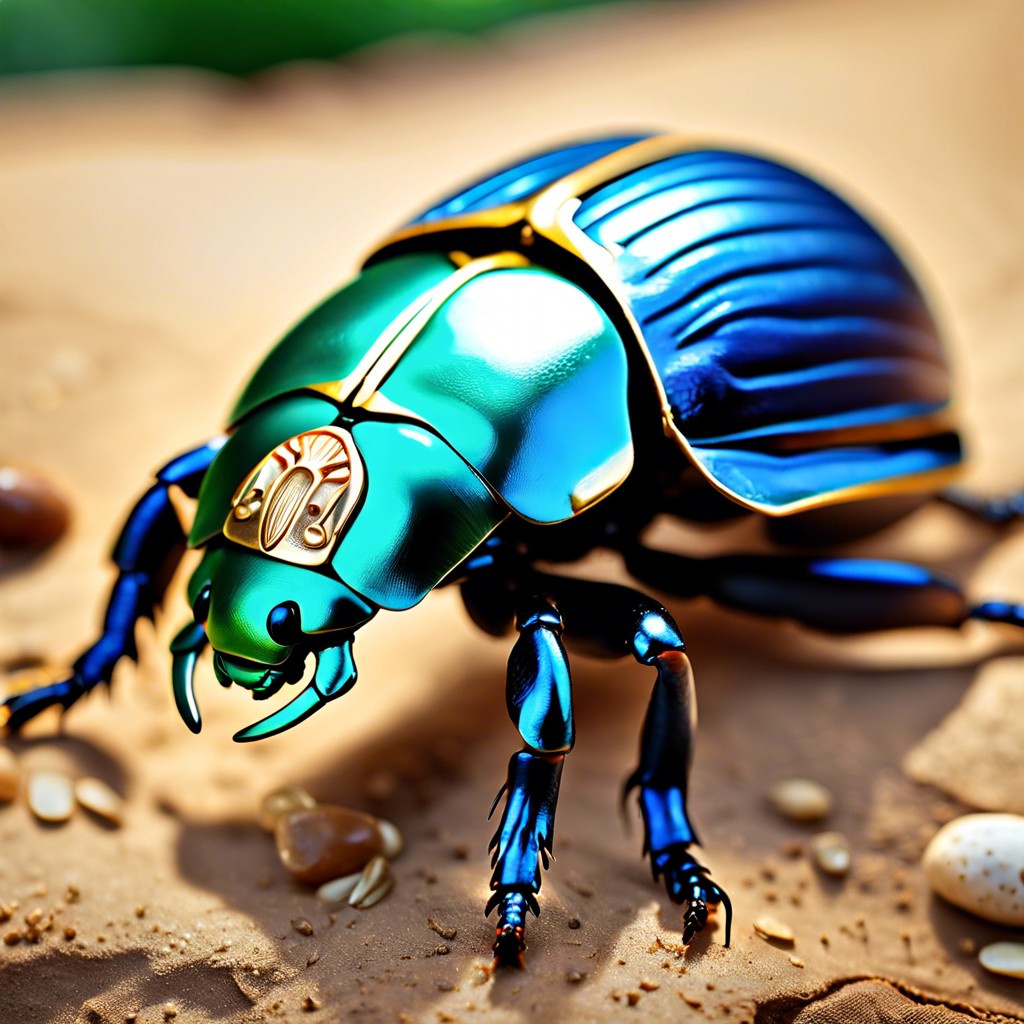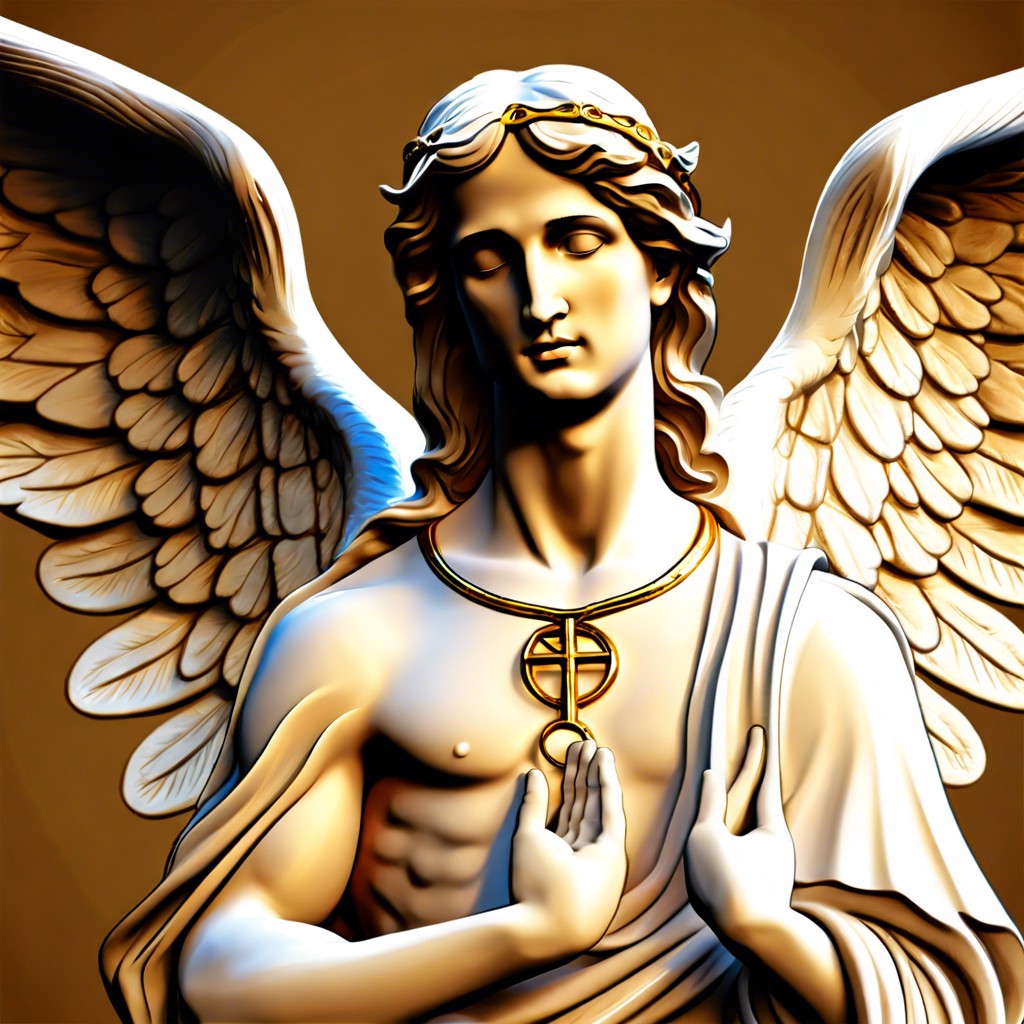Discover the spiritual meanings and symbolism behind the scarab, a powerful symbol of transformation and protection.
The scarab beetle, an ancient symbol steeped in mysticism, holds profound spiritual meanings that resonate deeply even today. From invoking rebirth and regeneration to embodying the protection of the powerful deity Ra, the scarab is a timeless emblem of transformation and personal growth. Discover how this sacred insect’s symbolism extends to amulets and talismans, guiding us through life’s journey with its celestial connections and mystical insights. Dive into the spiritual tapestry woven by the scarab and explore its enduring legacy.
Key takeaways:
- Scarab symbolizes rebirth and regeneration, embracing change.
- It’s connected to the solar deity Ra, symbolizing creation.
- Scarab offers protection, guidance, and spiritual enlightenment.
- Represents personal growth and transformation amid challenges.
- Used in amulets for protection, rebirth, and personal evolution.
Symbol of Rebirth and Regeneration

In ancient Egyptian culture, the scarab beetle held significant meaning, emphasizing renewal and regeneration. This symbolism stems from the beetle’s life cycle.
Emerging from dung, where it lays its eggs, symbolizes birth from decay, turning destruction into creation. The scarab’s daily ritual of rolling dung balls mimics the sun’s journey across the sky, linking it to the god Ra.
Associated with daily rebirth, the scarab resonates with personal transformation. It encourages embracing change and trusting in the cyclical nature of life. Each phase, no matter how challenging, offers an opportunity for growth.
Connection to the Solar Deity, Ra
In ancient Egyptian mythology, the scarab beetle is closely linked to Ra, the sun god. Ra symbolized creation and renewal as he journeyed across the sky each day. The scarab, rolling its dung into a ball, was seen as a miniature representation of Ra pushing the sun across the heavens.
One fascinating point is that the scarab’s behavior mirrored the sun’s path. By rolling its ball from east to west, the beetle reflected the sun’s daily journey.
Another cultural belief is how scarabs were thought to be born from the ground, emerging miraculously, much like the daily rebirth of the sun.
Lastly, many artifacts depict Ra with a scarab head or with scarab amulets, emphasizing this sacred connection. These symbols held the promise of protection and eternal life.
Representation of Protection and Guidance
In ancient Egyptian culture, the scarab was seen as a powerful protector. People believed it could ward off evil spirits and negative energies. Carrying or wearing a scarab amulet was thought to offer a safeguard against dangers.
Scarab amulets were often placed with the deceased, guiding souls safely to the afterlife. These protective symbols were also inscribed with spells or prayers.
Interestingly, scarabs weren’t just about physical protection. They were thought to offer spiritual guidance, helping individuals make wise decisions and stay aligned with their true path. Having a scarab close by was like having a spiritual advisor at hand, steering one towards growth and enlightenment.
Emblem of Transformation and Personal Growth
In Ancient Egypt, the scarab symbolized profound personal evolution. This beetle rolls dung into a ball and lays eggs inside, signifying life’s continuous cycle of transformation.
Scarabs remind us that change is a natural part of existence. They encourage embracing new beginnings, even if they seem daunting.
They also symbolize emerging from darkness into light. Just as the beetle’s larvae transform within their protective sphere, we too can grow through introspection and perseverance.
A scarab amulet can inspire personal development, helping you stay resilient amid life’s challenges. It’s a powerful emblem of inner strength and the transformative journey of the soul.
Use in Amulets and Talismans
Scarabs were commonly used in ancient Egypt as powerful symbols embedded in amulets and talismans. These objects were believed to harness the protective and transformative powers of the scarab beetle, making them essential for both the living and the deceased.
One of the primary uses of scarab amulets was to safeguard the wearer from evil forces. By carrying a scarab, one was thought to be shielded from negative energies and misfortune.
Another significant purpose was to ensure a safe passage to the afterlife. Scarab amulets placed with mummies were believed to help the deceased navigate the challenges of the underworld, providing guidance and support on their journey.
These amulets also symbolized rebirth. People looking for personal transformation or new beginnings would often wear scarabs as a reminder of their potential for growth and renewal.
In essence, the scarab amulet served as a multi-faceted spiritual tool, embodying protection, guidance, and the promise of continual personal evolution.





